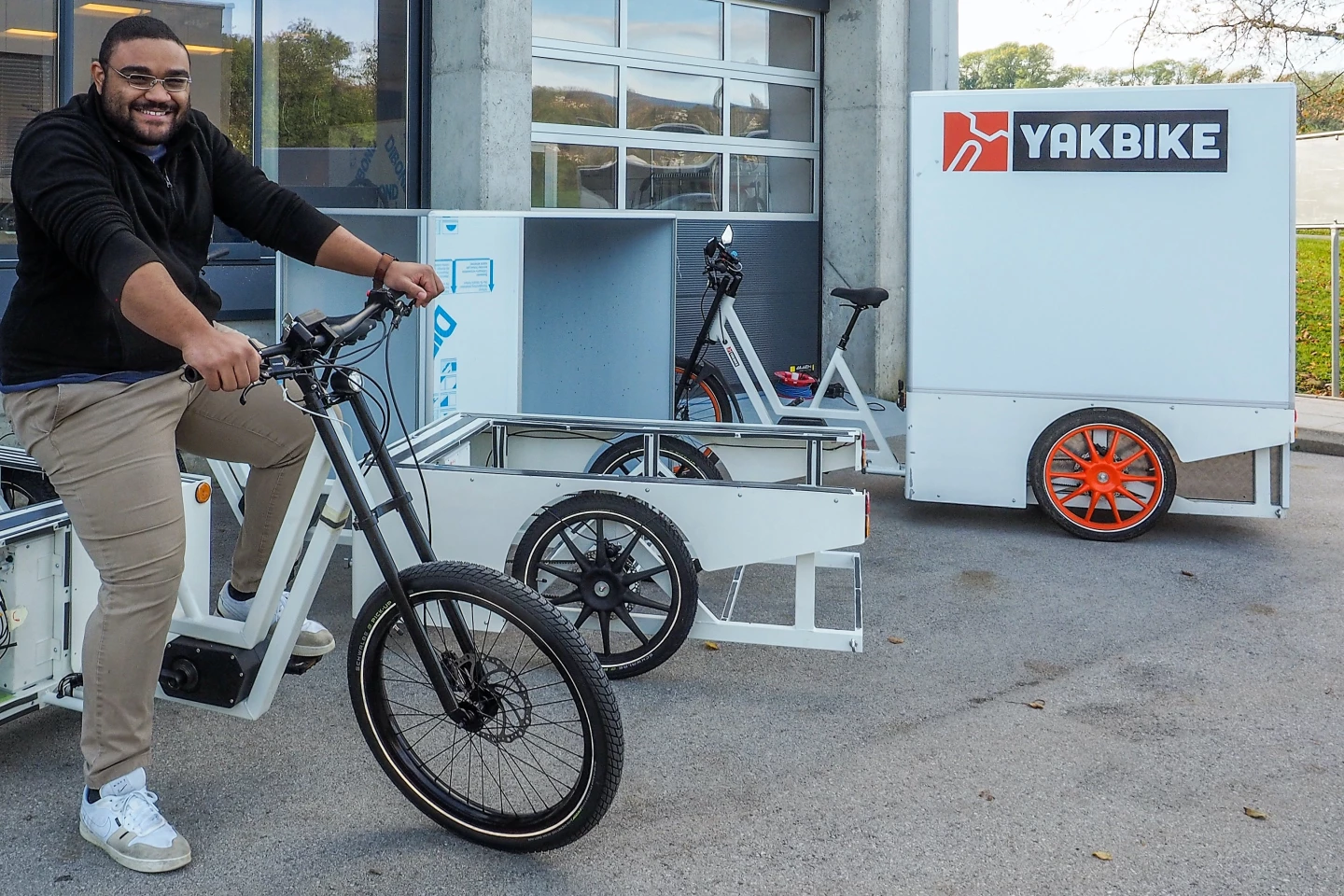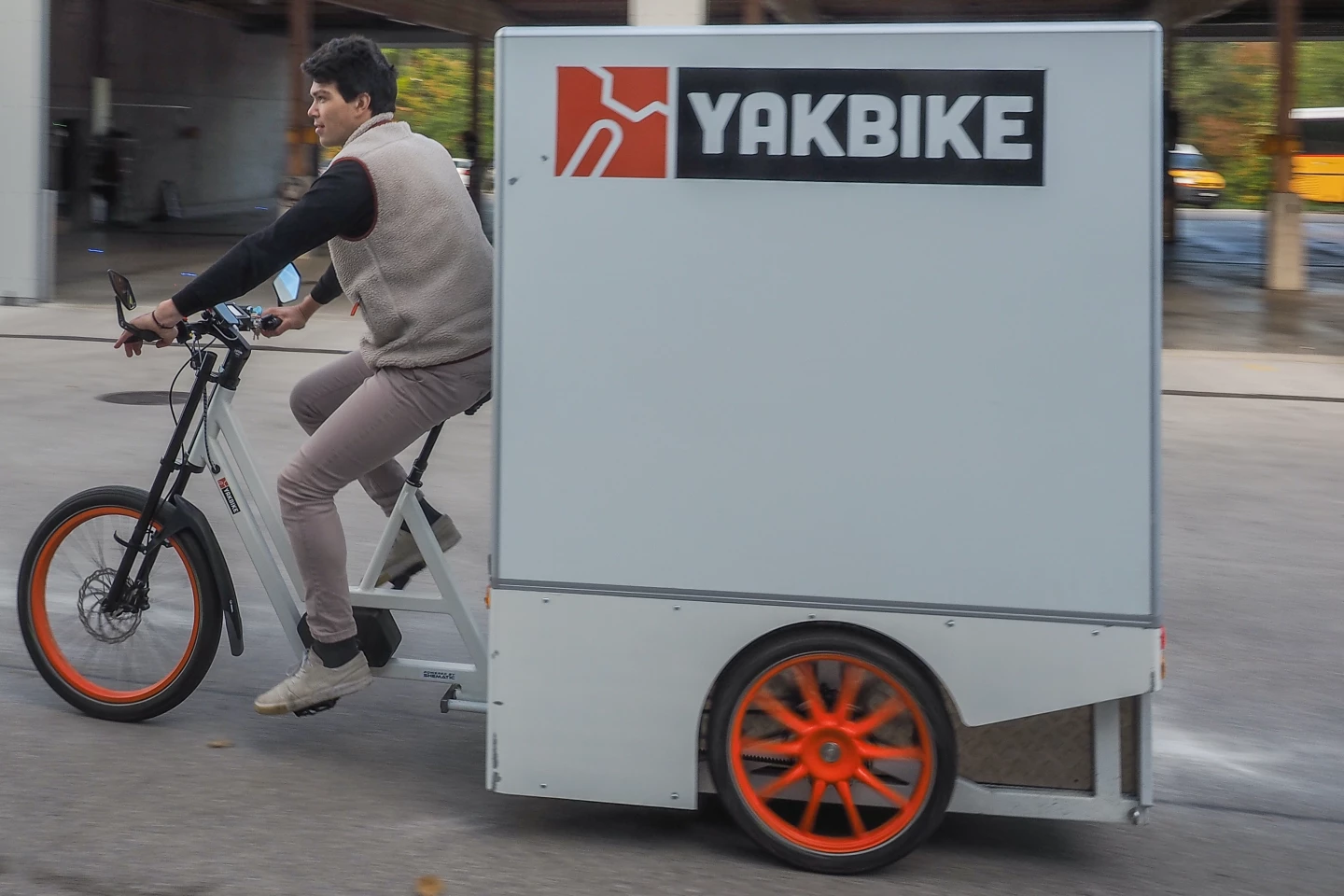While cargo e-trikes definitely are a greener, cheaper-to-maintain alternative to delivery vans, their layout is limited by having to accommodate a chain-drive drivetrain. The Yakbike takes a different approach, as its drivetrain is electronic.
Manufactured by Swiss mobility company Shematic, the Yakbike places its crankset directly in line with its flat-fronted cargo bed. Additionally, in order to boost stability, its front end leans into corners while its rear end remains upright.
Both of these features would be difficult to incorporate into a trike that utilized a traditional drivetrain, in which a chain (or belt) ran from the crankset back to the rear axle. The Yakbike gets around such limitations by using a stepless electronic drivetrain.
Putting it simply, as the rider pedals, they spin up a generator instead of directly driving the rear wheels. That generator in turn charges the battery that powers the two 250-watt rear hub motors – the setup is similar to the existing Free Drive system.

The motors each put out 170 Nm (125 lb ft) of torque, taking the rider to a top electric-assisted speed of 25 km/h (16 mph). One charge of the standard single 2.6-kWh lithium-ion battery should be good for a claimed range of about 80 km (50 miles), although that figure can be boosted to 150 km (93 miles) by adding an optional second battery. A regenerative braking system helps extend the trike's range.
Some of its other features include hydraulic disc brakes, a full LED lighting system with turn indicators, an electronic differential, and a throttle mode for help when pushing the trike or starting up from stops. The whole thing reportedly tips the scales at 70 kg (154 lb), and is capable of carrying a maximum rider/cargo payload of 350 kg (772 lb).

Pricing for the Yakbike starts at 12,900 Swiss francs (about US$14,689) for the pickup-truck-like base model. Optional rear cargo modules include a large Yakbox delivery box, a trash bin, an organic waste bin, and a pallet carrier.
Source: Yakbike






